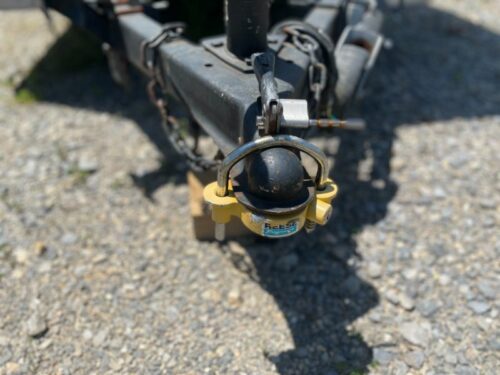So, you’re interested in van life? After a few weekend trips in camper van rentals and following your favorite #vanlifers on Instagram, you think you’re ready to start shopping for a van of your own? Congratulations!
Don’t let your excitement wear off. Shopping for a camper van has been quite the “learning experience” for my fiancé and me. We have yet to say “yes” to a van, but we have said “no” to more than a few options. Here’s why we decided against the options we have seen so far.
CHOOSING THE VAN
Whether it’s a relationship, a house, or van your are building, everyone know a strong foundation is key. Choosing the perfect shell for your Lilliputian home-away-from-home is a big decision that requires a lot of research, especially for someone like me who knew very little about cargo vans.
There are so many vehicles out there to choose from: RVs, school buses, cargo vans, and minivans have all been converted and lived in. The top three contenders in our research were the Ram Promaster, Mercedes Benz Sprinter, and Ford Transit.
What Turned Us Off About the Mercedes Benz Sprinter
The Sprinter van was our introduction to van life, and so, our first choice. When my dreams of van life began, I didn’t even know there were any other options!

I quickly learned of all the other cargo vans on the market and the Mercedes Benz Sprinter got a quick boot off the list. Here’s why:
1. Premium Price
Mercedes Benz Sprinter Vans are a pricey option as cargo vans go. Starting at $38,300, according to the Mercedes Benz website, with the lightest payload and a standard roof.
2. Hard to Maintain
Not only are they expensive to buy from a dealer, but they are also expensive to maintain. Not every mechanic can work on Mercedes Benz Sprinters (because of their turbocharged/diesel engines) and those who can charge a pretty penny for their services – which means even simple Service A and Service B interval maintenance services can cost up to $1,000!
3. Costly Repair Parts
On the same note, ordering foreign parts when something needs to be replaced can be costly because Mercedes Benz is a German luxury automotive brand. Even though Sprinters are popular around the world, parts can be hard to come by domestically.
4. Complicated Build-Out
Looking down the road at the build process itself, the curved walls of a sprinter van make things a bit more complicated. While the look of the van from the outside is more appealing than the boxier cargo van models, the challenge was not worth the glam.
5. Narrow Living Width
When comparing measurements of the Sprinter, the Transit, and the Promaster side by side, the Sprinter is the most narrow option. Sleeping width-wise in a Sprinter is simply not an option for us vanlifers who are over 5’5”. This fact alone was enough for us to stop considering the Mercedes Benz Sprinter.
Mercedes Benz Sprinter Vans are easily the sexiest option for cargo vans. You probably see a lot of van life YouTubers and content creators cruising around in these luxury vehicles. Personally, the look was not a priority. We were looking for the most affordable option that would be easy to convert.
Thank you, next.
How We Decided Against the Ford Transit
The Ford Transit was a strong competitor against the Ram ProMaster. Honestly, there is very little setting these two vans apart. They are both strong competitors.

But at the end of the day, we had to pick a player and the Ford Transit wasn’t it. Here’s why:
1. Curved Walls
Like the Sprinter Van, the Transit has a bit of a curve to the walls. There is about a foot difference between the widest part of the Transit and the most narrow. That angle makes it more difficult to build out the interior of your van and it takes away the amount of usable, livable space in the van.
2. Difficult Living Space Access
The roof was the ultimate deal-breaker for us. The Ford Transit has the most curved roof out of all three vans. On top of that, there is a steep slope from the cargo space to the cockpit, making it a bit difficult to get from the driver’s seat to your living space. On the outside of the van, the slope leaves less room on the roof of the van for solar panels, vent fans, or a deck.
It’s important to note that the Ford Transit high-roof is the tallest option on the list with over 6’6” of space between the floor and ceiling of an empty van at its tallest point. If you’re well over 6 feet tall, the Transit may be the best option for you.
At the end of the day, we simply don’t need the extra head space, but this spec certainly made it harder to say no.
Why We Voted For the Ram ProMaster
Which left, by process of elimination, the Ram ProMaster!

WHY WE OPTED FOR LESS SPACE IN OUR RAM PROMASTER
Once we settled on the Ram ProMaster, there was still more research to be done!
There are three sizes to choose from when shopping for a ProMaster: 136” Wheelbase, 159” Wheelbase, and 159” Wheelbase Extended. For some people, living space is everything, and choosing the extended version is a no-brainer. But there is actually a bit more to consider.
136” Wheelbase
Pros
- This version is the easiest to drive. The shorter wheelbase means the van drives like your average pick-up truck. It isn’t much of an adjustment from your everyday vehicle in regards to a turning radius.
- The 136” wheelbase is about 17’ 8” long. It fits into an average parking space making it ideal for stealth camping or visiting cities.
Cons
- This ProMaster offers the least amount of living space. We have taken weekend trips in rental vans this size and had no issues however, I would not want to live in this size vehicle full-time.
159” Wheelbase Extended
Pros
- In total, this van is 20’ 9” long, offering the maximum amount of living space in a ProMaster.
Cons
- The size of this van means you have to be a bit more strategic about where you take it. It can still fit in parking spaces but it is certainly a tighter fit than the 136” or 159”. It’s not as ideal for stealth camping or parking up in your friend’s driveway.
- The longer the vehicle, the longer it takes to adapt. I have always driven small, sports cars so adjusting to the length of an extended ProMaster would be a bit of a challenge when it comes to backing into campsites and such.
I honestly felt like Goldilocks choosing the Ram ProMaster model that was right for us. The 136” wheelbase is too small, the 159” wheelbase extended is too big, but the 159” wheelbase is just right!
TO BUILD OR NOT TO BUILD?
Once we decided on the type of van we wanted, the search really began. We kept our eyes peeled for both empty cargo vans, partially converted vans, and fully converted vans. We were picky with the converted vans because we had an ideal layout in mind that we were prepared to build ourselves if it made the most financial sense. We decided not to build our own van because … money.

High Demand for Cargo Vans
Between the ever-growing popularity of van life and Amazon constantly expanding their fleet of delivery vehicles, empty Ram ProMasters are in high demand. Any used vans being sold from Amazon are either totaled or had far too many miles on them for our preference. Not to mention, high demand of these vehicles means high prices as well.
Price of Raw Materials
To build a van at this point in time would cost an incredible amount of money because of inflation. It’s not just lumber prices that have skyrocketed, it’s everything from hardware to cabinetry, to paint, etc. Buying an empty, used ProMaster and building it out would cost about the same amount of money as buying a used van that has already been converted.
Because prices were comparable, and we did not have our hearts set on a van that was built with our own love, sweat, and tears, it was a fairly easy decision for us to buy an already converted camper van. However, if you are really passionate about building your home yourself and personalizing it completely to you, it would not make all that much of a difference in price. Or you could hire a custom RV builder to do it for you.
THE SEARCH CONTINUES…
The deeper we go into research the pickier we become. Luckily, we are in no rush to purchase the first van we see. Right now, we are searching for a unicorn that offers exactly what we want and then some. Planning far enough ahead and granting ourselves the luxury of being picky guarantees we end with the perfect van for us.
Unmet Criteria in Converted Vans We’ve Looked At
- No additional seating in living space and no easy way to add seating. If the only option for sitting in the van is to sit on the bed, it’s a no from me. At the very least, I want swivel seats on the passenger and driver seat. What I’m really looking for is a bench seat or an easy way to install a bench seat in the current layout.
- No way to shower outside. A must for me is the ability to rinse myself and my dog before entering the van. Whether it’s a designated outdoor shower out the back or the sink placed near the sliding glass door so we can extend the faucet, it doesn’t matter to me. I plan on spending a LOT of time at the beach with my fluffy mini Goldendoodle, so a good rinse is a necessity for us.
- Full bathroom in the van. If the van build includes a full, stationary wet bath it is not the van for us. For starters, it almost always makes the van more expensive and it is not a luxury I am willing to pay for. Additionally, it takes up space and often makes for a tight squeeze in the kitchen area. It just seems unnecessary to us. If there is running water elsewhere in the van there isn’t a need for an indoor shower. Perhaps if we were big winter sports people, maybe I would want the inside shower. But our plan is to follow the sunshine and avoid climates that are not ideal for outdoor showers.
- Diesel. Gas prices are bad enough; I am certainly not going to pay for diesel. Not to mention one of our goals with van life is to live more sustainably and have less of an impact on the planet through minimalism. Diesel seems counter-productive and hypocritical to that goal. The emissions are awful, and the DEF fluid is a hassle. In my experience, it is loud and smelly. Just no.
Although we haven’t found the van of our dreams just yet, we know exactly what we are looking for. The research and decision making is behind us and now, we simply search and wait. It’s been a long process for sure but we do not regret any of it. Conducting loads of research has left us confident and ready for the perfect van.
Lindsey Rush (she/her) is a published poet, freelance writer, and travel blogger. Her goal as a travel blogger is to help people fight depression by encouraging them to chase the sunshine and make travel plans that they can look forward to in hard times.
-
Lindsey Rushhttps://changingears.com/author/lindsey-rush/








